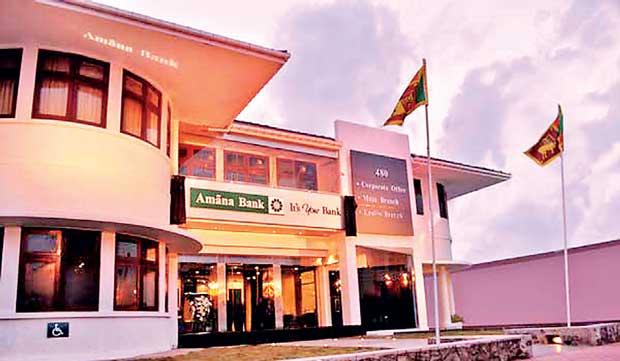Reply To:
Name - Reply Comment
 Amana Bank PLC, Sri Lanka’s first non-interest model Islamic bank, is in talks with prospective foreign parties to infuse equity capital to meet the regulatory minimum capital requirements, the bank said in a stock exchange filing.
Amana Bank PLC, Sri Lanka’s first non-interest model Islamic bank, is in talks with prospective foreign parties to infuse equity capital to meet the regulatory minimum capital requirements, the bank said in a stock exchange filing.
Such a deal could see the bank divesting a stake to a foreign party as the bank is negotiating to bring in equity. The bank however said such capital raising is subject to the necessary regulatory approvals.
“Such raising of funds, by way of equity, would be subject to the approvals of the Central Bank of Sri Lanka, Department of Exchange Control, Securities and Exchange Commission of Sri Lanka, Colombo Stock Exchange (as applicable) and shareholders,” Amana Bank said in its filing.
According to the minimum capital enhancement plan of the Central Bank, Amana Bank was required to raise its minimum core capital to Rs.10 billion by January 1, 2016. But the Central Bank, in 2015, granted the bank time till January 1, 2018 to meet the requirement with interim targets.
According to the capital augmentation plan agreed with the regulator, the bank was required to raise its minimum core capital to Rs.7.5 billion by January 1, 2017 and further up to Rs.10.0 billion by January 1, 2018.
As of September 30, 2016, however, the bank was failing short of meeting this interim target as its core capital stood at Rs.5.2 billion.
Meanwhile, the budget 2017 proposed to double the banking sector minimum core capital level to Rs.20.0 billion, though no timeline was given. But it is expected the new capital levels would come into effect from January 1, 2018 onwards—an year from now.
However, the Central Bank has to issue a clear direction to the banks because the Finance Ministry cannot specify minimum capital levels to commercial banks.
The budget proposal to double the minimum capital levels of banks is said to be an arbitrary decision by the country’s belligerent finance minister though the Central Bank was consulted later on the matter.
However, the new Basel III rules demand higher capital adequacy levels in comparison to the risk-weighted assets to ensure banks operate with higher capital buffers to withstand shocks in times of stress, similar to the times of global financial crisis in 2008/9.
While some of the liquidity and interim capital adequacy levels are already monitored by the regulator at present, the Central Bank is most likely to issue directives on Basel III early this year, which will come into full force from 2019 onwards.
According to sources, Amana Bank has already lined up up to Rs.10.0 billion in equity capital and the current talks are for the balance requirement to meet the Rs.20.0 billion capital base.
“The bank would make further announcements to the market on the progress of such discussions, upon receiving firm commitments,” Amana Bank said in its filing.
Bank Islam Malaysia Berhad, AB Bank in Bangladesh and Islamic Development Bank based in Saudi Arabia cumulatively account for a 38.5 percent stake in the bank.
For the nine months ended September 30, 2016, Amana Bank surpassed its Rs.100 million profit mark and posted a net profit of Rs.101.5 million or eight cents a share, which is 16.3 percent less than an year ago.